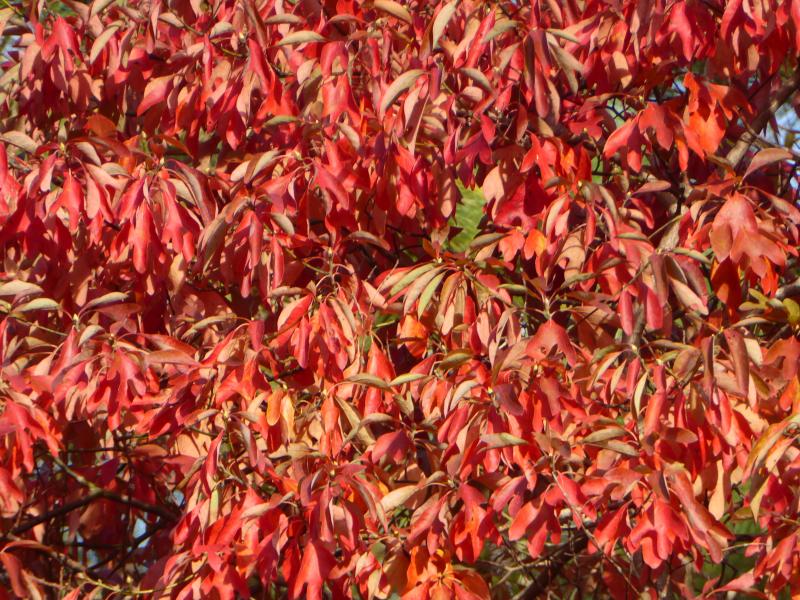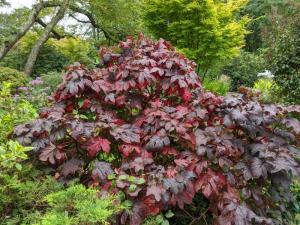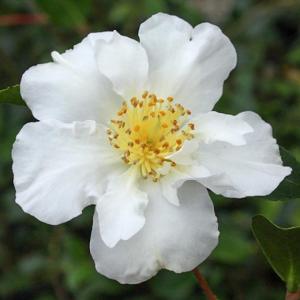Mill Pond Garden will welcome visitors to see the best picks for fall garden color from 10 a.m. to 1 p.m., Sunday, Nov. 8, rain or shine.
The garden is planted for autumn, offering a richly rewarding, colorful display. Visitors can enjoy the native beauties of dogwood, sour gum, sweet gum, sourwood (oxydendron), amsonia, red maple, devils club, sassafras and sumac, but also the glorious golds, reds and oranges of dozens of different Japanese maples and crape myrtles, and the burgundy of oak leaf hydrangea ruby slippers. For tickets or to subscribe, go to millpondgarden.com.
There will be much to see and learn about choices for flowering plants for fall, including the fall-blooming camellias, enhanced with numerous annuals including pansies, ornamental kales, and thousands of giant blue flowers on two-story-high morning glories, if frost does not get them before that date.
Camellias have been around the Cape Region for a long time but are underused. No shrub can add more to a landscape than a camellia. Camellias are perfect for this area, as they tolerate sun when established. In general, camellias grow about a foot per year, and bloom better in partial shade, at least when the plants are young. Some shelter from hot afternoon sun and from winter winds improves performance, especially for young plants, which thrive under the loose shade of tall trees or when grown on the north side of a house. Camellias like good drainage and compost-enriched soils, plus an annual late-winter fertilization with an organic fertilizer.
Camellias in this country are known to live more than 200 years. They have come a long way from cross-breeding new cultivars. Camellia sinensis, the tea Camellia, is the source of tea leaves. Tea was first cultivated in China over 2000 years ago. The story is that a Chinese emperor was tired, and he was heating some water under a tree. Some of the leaves from the tree dropped into his pot. When he sipped it, he discovered that it was sweet and bitter at the same time, leaving him feeling refreshed; tea averages 26 mg of caffeine per cup. Tea can be prepared by pouring hot or boiling water over cured or fresh leaves of the camellia sinensis, which grows well here. After water, tea is the most widely consumed drink in the world. The tea camellia is a beautiful plant with single white flowers that can be a great addition to a landscape.
There is a large range of coloration in camellia flowers, which look like roses or peonies and can be about the same range of sizes. Many have multicolored blooms. The most common colors are pink, red, coral, violet, purple, cream, or white. Different species bloom at different times, but all bloom for seven to 10 weeks, the longest-blooming of all shrubs. As evergreen shrubs that grow to about 10 feet tall, camellias enrich the landscape all year.
There are two main ornamental types of camellias, camellia japonica and camellia sasanqua, with a smattering of other types of camellias. Sasanquas bloom from mid-fall to early winter, and japonicas from midwinter to spring. Hybrids and other types can vary in their bloom times. Gardeners may choose some of each type to have beautifully blooming shrubs all fall, winter and spring. All types sold locally are hardy in the Cape Region. Camellias can be purchased in the box stores or the nurseries in either spring or fall.
Camellia sasanquas have smaller flowers but are usually much more floriferous than the japonicas, which have larger flowers but fewer of them on the plant. Japonicas are taller and larger plants but thrive best in shade. Sasanquas prefer sun to partial shade but are ideal for smaller lots. They tend to grow wider and lower.
Mill Pond Garden grows many camellias with flowers from October to June, recommending the following cultivar names: Kanjiro, Kramer’s Supreme, Black Tie, Londontowne Blush, April Tryst, Debutante, Yuletide, Setsugekka, Tom Knudsen, Kramer’s Beauty, Mrs. Lyman Clarke, In the Pink, Camellia sinensis and Christmas Beauty.
On Red Mill Pond near Lewes, Mill Pond Garden is a nonprofit, holistic, public botanical garden and a National Wildlife Federation Certified Wildlife Habitat.




















































